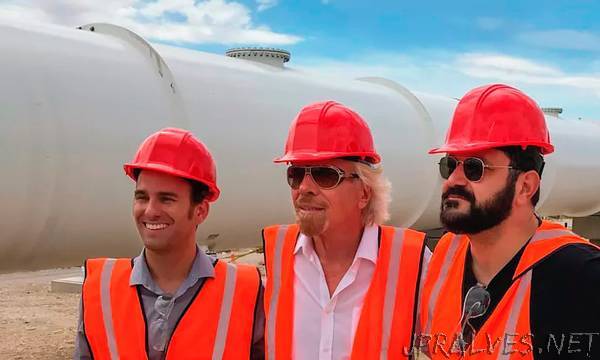
“The British entrepreneur says he wants to make ‘airline speeds on the ground’ a reality, while engineering experts cast doubt on the safety of the technology
Sir Richard Branson’s Virgin Group has invested an undisclosed amount in Hyperloop One, the frontrunner of a number of companies competing to bring Elon Musk’s futuristic vision of a magnetically-propelled high-speed transport system to life.
The investment, which makes up part of an $85m fundraising announced in September, will see Hyperloop One changing adding the Virgin name to its branding.
“This is an incredibly innovative and exciting new way to move people and things at airline speeds on the ground,” Branson said in a statement.
“With Virgin Hyperloop One, passengers and cargo will be loaded into a pod, and accelerate gradually via electric propulsion through a low-pressure tube. The pod quickly lifts above the track using magnetic levitation and glides at airline speeds for long distances due to ultra-low aerodynamic drag. We’re incredibly excited about the technology behind Virgin Hyperloop One and the way it could transform passengers’ lives.”
Josh Giegel, co-founder of Hyperloop One, said “the combination of our proven technology and Virgin’s expertise in transportation, operations, safety and passenger experience will accelerate the commercialisation phase of our company’s development. Together with Virgin, we will not only transform how we live, we will rethink how it feels to travel by creating a passenger experience that people will enjoy and look forward to riding. Our goal is to make travel fun again.”
The Hyperloop concept was first mooted in 2013, when Elon Musk, the billionaire behind Tesla cars and the SpaceX rocket business, released a 57 page “open source” document detailing his plans for a transport system that would carry travellers from San Francisco to LA in a matter of minutes.
The details of his proposal might have been unconvincing to many experts – one transportation engineer noted that, among other things, Musk radically underestimated the cost of concrete viaducts, the unpleasantness of high-speed tight corners and the difficulty of safely stopping in an emergency – but the proposal spawned a number of companies eager to work on versions of the idea.
Hyperloop One has risen to the forefront of those companies, with another, Hyperloop Transportation Technologies, not far behind. Both have abandoned some of Musk’s initial concepts, such as the proposed route and cost estimates, but kept the core technological proposal intact.
Neither has had a smooth ride, however. Hyperloop One lost its cofounder, Brogan BamBrogan, in a messy lawsuit alleging physical threats and financial misconduct against his co-founder and other company executives. Brogan has since started a third Hyperloop company, Arrivo.
The entire field was shaken by the announcement in July that Elon Musk intended to build his own Hyperloop after all. Musk tweeted that he had “verbal government approvals” to build an underground tunnel from New York to Washington DC through his start-up The Boring Company, although he did not, in fact, have formal approval from any relevant government body.
And there are still questions about whether the Hyperloop technology can even be made to work at all, at least in any way that renders it cost-effective compared to traditional high-speed rail. Critics note that no company involved has any history or expertise in securing the sort of massive government approval needed to build an intercity railway, and that on many factors other than speed, it is not clear that Hyperloop is actually an improvement.
Speaking in July, after the completion of one of Hyperloop One’s technology tests, Philippa Oldham, head of transport and manufacturing at the Institution of Mechanical Engineers said “As an engineer, there still seems to be some gaps in the information regarding the risks and safety of the system itself. There remains a challenge of cost both in terms of design, production and maintainability with figures initially quoted from the team already escalating.”
She added: “As the distance of the trials increase there will be many engineering problems to solve including that of managing track alignment. In the UK we would not be able to use any existing transport corridors at these speeds due to their lateral curvature. In addition, travelling at those speeds means that any fault in the system would mean everyone on board would die.”
Branson’s Virgin Group, however, is no stranger to messy attempts to embrace the future. Virgin Galactic, founded in 2004, seeks to sell sub-orbital space tourism to customers willing to pay $250,000 for the privilege. In 2008 Branson said the first passengers would fly in 18 months time, but the company has still not had its maiden voyage and the venture suffered an enormous setback in 2014 when a test flight plummeted to earth, killing a pilot.”
